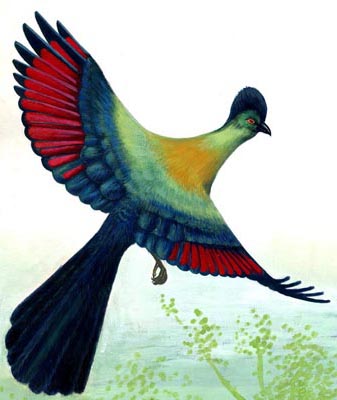The ENTC now has a new website, at www.entc.org.sz
Our logo is adapted from a painting by Phillip Dlamini, 1998, of a purple crested turaco. In traditional Swazi dress, the red feathers feature in the royal headdress, so this bird illustration is not only a symbol for wildlife conservation, but also of cultural heritage.


The main objectives of the Community Outreach Programme as stated by the Mlawula management plan (1996) are:
This is a collaborative project, involving traditional medicinal practitioners, the ENTC and the Eswatini Homeopathy Project. The initiative was begun in 2015, initially focussing on Warburgia salutaris (Pepperbark tree, sibhaha), then on Siphonochilus aethiopicus (African ginger, sidvungolo), and currently on Alepidea cordifolia (previously known as Alepidea amatymbica, likhatsato). The selection of the species for this project was determined by the opinions of the traditional medicinal practitioners, based on scarcity and desirability.
With regard to Warburgia, tree seedlings were sourced and distributed to the traditional healers to grow for themselves, and some were planted at selected localities within Mlawula Nature Reserve. The tree seedlings have in general done well, with many still surviving, some now almost almost metres tall. Unfortunately, attempts to obtain viable seed from the Warburgia trees naturally occurring with the reserve have not yet been successful.
More information on the Endangered Medicinal Plants Project.
Beekeeping is carried out in the Mhlumeni and Shewula communities. Initially, the hives were set up within the nature reserve, near the entrance gate, but there were problems with the hives being raided by honey badgers. The Mlawula COP works iwth the communities on this project, the project being a means of income generation for the communities, who harvest honey and beeswax. The beeswax is used for candle making and cosmetic purposes, and the honey is eaten and sold.
The following inputs are required for the continued improvement and expansion of the Community Outreach Programme:
Our Contacts:
Head Quarters: (+268) 2416 1489/1179
Email: info@sntc.org.sz
King Sobhuza II Park: (+268) 2416 1489/1179
Email: ksmp@sntc.org.sz
National Museum: (+268) 2416 1489/1179
Email: curator@sntc.org.sz
Copyright © ESWATINI NATIONAL TRUST COMMISSION
Malolotja Nature Reserve: (+268) 2444 3241 / (+268) 2416 1480
Email: culturalvillage@sntc.org.sz
Mantenga Nature Reserve and Swati Cultural Village: 2416 1151/1178
Email: culturalvillage@sntc.org.sz
Mlawula Nature Reserve: (+268) 2383 8885 (Reception)
(+268) 2383 8453 (Senior Warden)
Email: culturalvillage@sntc.org.sz
Magadzavane Lodge: (+268) 2343 5108/9
Email: magadzavane@sntc.org.sz